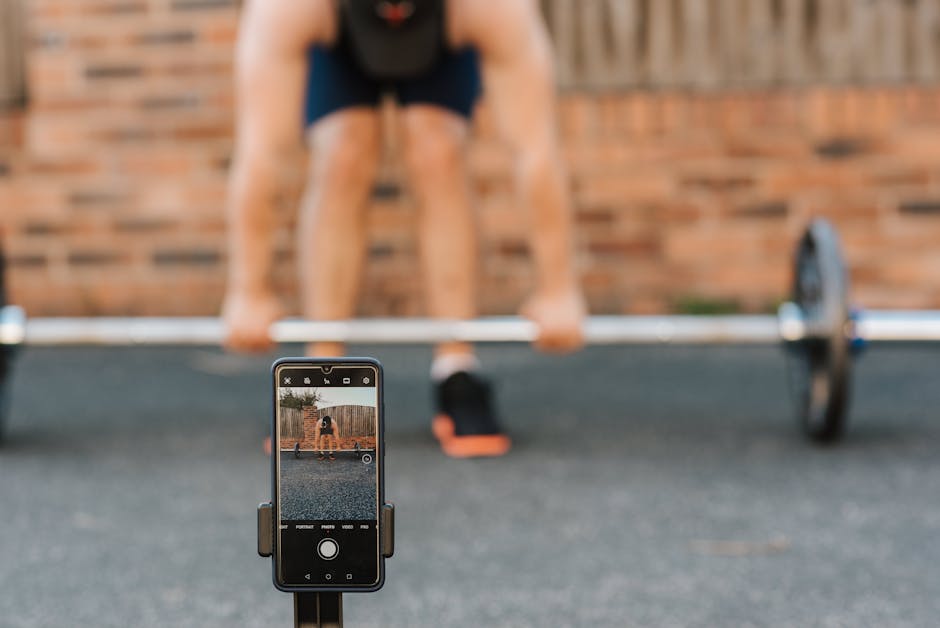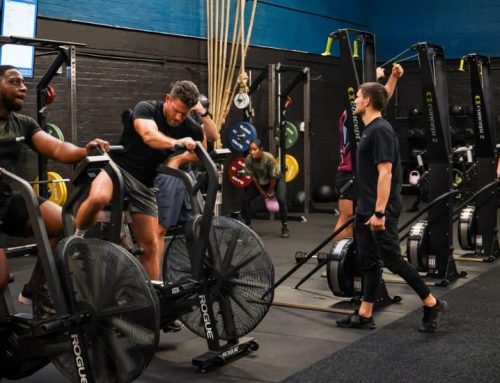Lifting weights with a hernia – sounds like a recipe for disaster, doesn’t it? After all, you don’t want your insides red-carpet rolled out for the rest of the world to see. But can you really let a little hernia hold you back from your Hulk-like aspirations? Fear not, my dear fellow bodybuilders, for we’ve got you covered. This article is your ultimate guide to lifting heavy with a bulge in your gut; without turning into a Jack in the box. So, pull up a chair, put on your reading glasses, and prepare to learn how to sweat it out without popping it out!
Contents
- 1 1. Understanding the risks of weightlifting with a hernia
- 2 2. Symptoms to watch out for while weightlifting with a hernia
- 3 3. Professional guidance to help you lift without aggravating your hernia
- 4 4. Pre-workout tips to reduce the risk of hernia injury
- 5 5. Important exercises to avoid and alternative workouts for hernia sufferers
1. Understanding the risks of weightlifting with a hernia
Weightlifting can be a great way to strengthen your muscles and reach your fitness goals. But if you have a hernia, it’s important to understand the risks associated with weightlifting. Here are a few things to keep in mind:
First, lifting heavy weights can cause your hernia to worsen or even rupture. This can result in serious complications and require surgery to fix. So before hitting the weight room, be sure to check in with your doctor to make sure you’re clear to lift.
Second, certain lifting techniques can put extra strain on your hernia. Exercises that involve straining or holding your breath, like deadlifts or squats, should be avoided or modified. Instead, focus on exercises that are less intense and don’t require as much abdominal pressure, like bench presses or lat pulldowns.
Finally, always listen to your body. If you feel any pain or discomfort while lifting, stop immediately and take a break. Pushing through the pain can lead to more serious injury and put you out of the game for even longer. With a little caution, however, weightlifting with a hernia can still be a safe and fun way to stay fit.
2. Symptoms to watch out for while weightlifting with a hernia
2. Symptoms to Watch Out for While Weightlifting with a Hernia
So, you’ve got a hernia and you still want to lift weights? Power to you, you brave soul! However, lifting weights with a hernia is no easy feat. You need to be extra careful about the symptoms your body is exhibiting while you lift. Here are some things to watch out for:
- Bulging and pain: This is the most obvious one. If you see any bulging or feel any pain in your abdomen or groin area, stop immediately and consult your doctor. This is a sign that your hernia is aggravated and needs immediate attention.
- Nausea and vomiting: If you feel nauseous or experience frequent bouts of vomiting while lifting weights, it could be a sign that you are putting too much stress on your abdomen and your hernia is acting up. Take a break and try again after you’re feeling better.
Now, don’t panic if you experience any of these symptoms. It’s not the end of the world! Just take it slow and steady, and listen to your body. If you’re feeling particularly daring, you could even turn these symptoms into a game – kind of like a drinking game, but with hernia symptoms instead! Take a shot (of water, of course) every time you feel a bulge, or take two shots every time you feel like puking. Okay, maybe that’s not the best idea – but hey, if humor helps you through the pain, then go for it!
3. Professional guidance to help you lift without aggravating your hernia
Professional guidance is essential when it comes to lifting with a hernia. The last thing you need is to misinterpret advice and accidentally aggravate your condition. So, let’s dive into some helpful tips that won’t pop your belly button like a confetti cannon.
Firstly, take it slow. Lifting weights can be addicting, but pacing yourself is key to avoiding a hernia relapse. Start with low resistance exercises such as leg lifts and calf raises. Progress to weight machines that isolate specific muscles before tackling compound exercises like squats or deadlifts. After all, no one wants to end up on the ground shouting, “I’ve fallen and I can’t get up!”
Secondly, use your core muscles. No, I’m not talking about your six-pack abs from the last time you did hot yoga. We’re talking about your internal abdominal muscles that keep your intestines in place. Properly engaging these muscles while lifting can significantly reduce your risk of further hernia complications. So, suck it in and tuck it tight, you’ll thank me later.
Lastly, invest in a weightlifting belt. It may not be the most fashionable accessory, but neither is a ruptured hernia. A good weightlifting belt provides additional support to the lower back and abdominal regions, reducing the strain on your hernia. So, swap out your designer gym bag for a savvy belt and let everyone know you mean business.
4. Pre-workout tips to reduce the risk of hernia injury
Now, we all know that hernias are no joke. They can be incredibly painful and limit your mobility for a long time. But fear not, dear reader, for I have some pre-workout tips for you that can greatly reduce your risk of hernia injury. And I promise, none of them involve avoiding the gym altogether.
First on the list is stretching. Yes, I know, it’s not the most exciting thing in the world. But trust me, it’s a lot less exciting to be stuck on the couch for weeks with a hernia. So, before you start pumping iron, make sure you take the time to stretch out those muscles. And don’t forget to focus on your core, that’s where hernias like to hang out.
Next up, we’ve got the importance of proper form. This is important for any workout, but especially so when it comes to avoiding a hernia. You want to make sure you’re not putting unnecessary strain on your abdominal muscles. Keep your back straight, your shoulders relaxed, and focus on your breathing. And don’t be afraid to ask a trainer for advice if you’re unsure of your form. It’s better to be safe than sorry, and hey, you might learn something new.
Last but not least, let’s talk about clothing. Yes, clothing. You might not think it makes a difference, but trust me, it does. Wearing tight or restrictive clothing can put extra pressure on your abdominal muscles and increase your risk of a hernia. So, opt for loose-fitting workout gear that allows for a full range of motion. And while we’re on the subject, invest in a good pair of supportive underwear. Your future hernia-free self will thank you.
5. Important exercises to avoid and alternative workouts for hernia sufferers
So, you’ve got a hernia. Well, don’t panic because you still have plenty of exercises you can do without causing yourself any further discomfort or damage. But, before we get into those, let’s first discuss the exercises that you should avoid like the plague.
- Sit-ups: Sorry, folks. It’s time to say goodbye to sit-ups for a while. This exercise puts a lot of pressure on your abdominal muscles, which are already weakened by the hernia. Instead, try doing planks or bridges for a core workout.
- Deadlifts: Deadlifting can be an amazing way to work the glutes and hamstrings, but it’s not worth the strain on your hernia. Instead, you can try cable pull-throughs or glute bridges.
- Cycling: If your hernia is in your groin area, then cycling is a definite no-go. The pressure put on the groin muscles during cycling can exacerbate the hernia. Try swimming or an upper body focused exercise instead.
Now, let’s talk about some alternative exercises that you can do instead:
- Yoga: Yoga is a gentle way to work on your core muscles and improve your flexibility. Just be sure to avoid any poses that put pressure on your hernia, like boat pose or sphinx pose.
- Swimming: Swimming is a great low-impact exercise that works your entire body. Plus, the water provides a lot of support and can help relieve any discomfort from your hernia.
- Pilates: Pilates focuses on building core strength and stability, without putting too much pressure on your abdominals. Just make sure to avoid any exercises that involve twisting or crunching.
Remember, always listen to your body and talk to your doctor before starting any new exercise routine. And, of course, if any exercise causes pain or discomfort, stop immediately and seek medical advice.
In Conclusion: Carry That Weight!
So, there you have it, folks! We hope our professional guidance sheds some light on the murky world of weightlifting with hernia. Remember, it’s not all doom and gloom. With the right mindset and proper technique, you can still pump some iron and leave those biceps bulging. Just don’t forget to consult your doctor before hitting the gym. And always listen to your body! If you feel any discomfort or pain, stop immediately. After all, lifting weights with a hernia isn’t worth sacrificing your long-term health. So, go forth and lift, dear readers, but do it safely and wisely. Happy lifting!








Leave A Comment